The birthday tour
Opel’s first ever mass-produced luxury car appeared at the end of 1937. It was later named the 1938 Admiral, as manufacturing officially began after the plant’s summer break had ended. But 1937 is indeed the correct year for the milestone anniversary, which was celebrated on narrow roads on hilly terrains in Rheinish Hesse as well as at Schloss Westerhaus, the vineyard that belongs to the von Opel family. Several units of the Insignia Grand Sport model were also present at the tour, which was organized by Alt-Opel IG and Opel Classic.
It is a stunning scene to behold in front of the Adam Opel Building on a cloudy morning in mid-July. Twelve Admiral vehicles have been brought together, and the owners greet each other warmly. Some of them have known each other for four decades or more; others are newcomers but are immediately taken in by the Admiral family. The term ‘tight-knit community’ is an overused one, but here it applies perfectly.
Finally it starts
The event takes off after a group photo is taken. The starter motor of the Admiral slowly turns and lets out a muffled ‘vroom, vroom.’ The quiet sounds of the mechanical systems, the gentle noise of the intake, and the low rumble of the exhaust ring out together in unison. The Admiral, which is still powered by a robust six-cylinder engine with 3.6-liter displacement, starts powerfully. The inclines of the hilly terrain rarely give cause to downshift. The engine, by the way, is quiet and unintrusive, as the transmission is synchronized for all gears except for the first. Only a swift double clutching is required to switch to the first gear. Except, this is not actually necessary, since the huge torque easily manages the inclines. The engine delivers an enormous amount of power when travelling faster than idling speeds. The first Olympia and Kapitän models also had the typical throttle engines designed for greater torque, but this characteristic comes to light even more clearly in the Admiral due to the longer displacement.
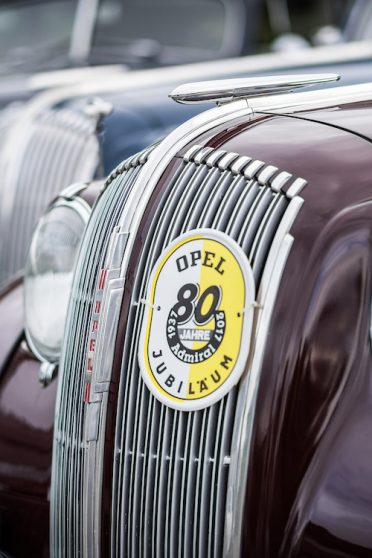
The 3.6-liter, 75 hp straight-six cylinder engine has a robust appearance and still impresses today with its smooth-running feel.
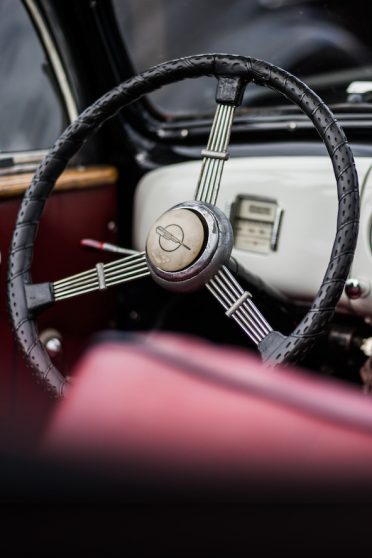
Maximum comfort The four side windows can be cranked open and there are four additional hinged windows that let in fresh air to the interior without gusty winds.
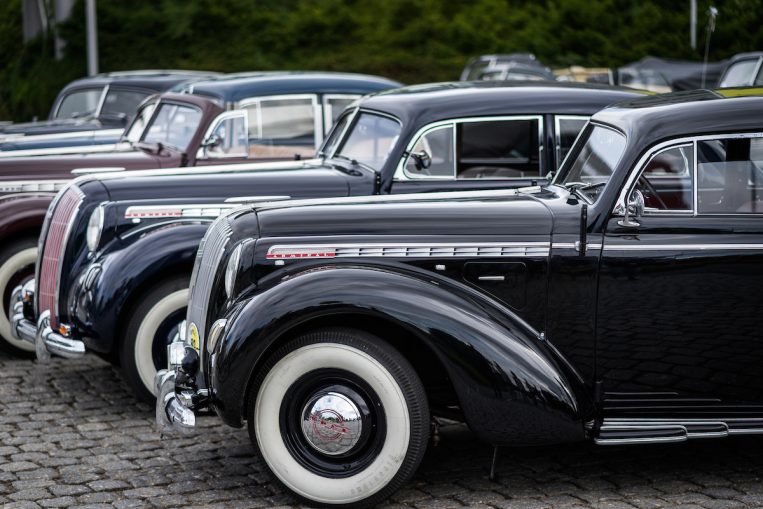
The five-meter-long luxury car Experts estimate that there are just under 50 units left of the model worldwide today.
A pleasant stubbornness
I drive the first few kilometers with Josef Lummer, an old-timer in the Admiral scene. He comes from the area around Paderborn and has travelled in together with his wife Elisabeth. His sedan bears the lateral trims correctly, with a red stripe only on the lower side of each lateral trim and not on the finely polished door handles. He values this accuracy, but when I ask about the red stripes on the grille, he says: “They don’t belong there, but I like how they look so I’m keeping them!” Members of the admiralty tend to have a pleasant, self-ironizing stubbornness about them, since many spare parts for the old car can be difficult to come by.
One may think that fans of classic and vintage cars, particularly those from the pre-war era, are old know-it-alls through and through, who are rather stuffy and esoteric. But this is not at all the case. Case in point: Nicole Seemann, who came accompanied by her boyfriend Dirk Bellof. Nicole is a young, modern woman with long blonde streaks and dark makeup on her eyes and lips and drives the Admiral herself. And why not? Luxury cars from the pre-war days required more strength to operate than those of today – but not so much more that a young woman cannot cope with the five-meter-long Admiral on her own. Maneuvering the car in the same spot can be somewhat tricky, but give it a bit of gas and it moves along just fine. It isn’t until you reach the road that it becomes clear that the Admiral requires less operating force. Servomotors weren’t available back then, so steering wheels needed to have larger diameters (and a delicate design). As a result, the steering wheel is easy to operate, but you need to move it quite a lot.
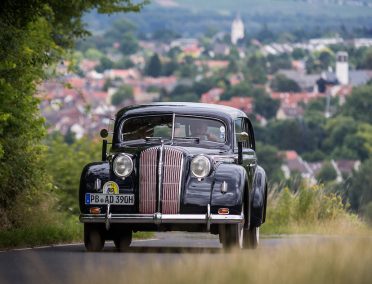
Red stripes on the grille Members of the admiralty tend to have a pleasant, self-ironizing stubbornness.

Why not? Nicole Seemann drives the Admiral herself.
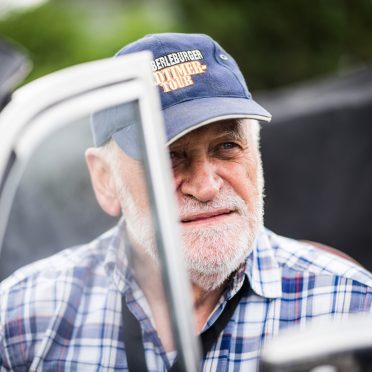
The Hebmüller, which has remained properly registered, has travelled a distance of half a million kilometers, of which 100,000 kilometers were travelled by Klaus Adler.
Half a million kilometers on the odometer
I switch cars and step into the Hebmüller cabriolet that belongs to Klaus Adler. The car is narrower in the back than in the factory model, which means the large vehicle is only suitable as a two-seater for longer distances. The Hebmüller, which has remained properly registered, has travelled a distance of half a million kilometers, of which 100,000 kilometers were travelled by Klaus. “We recently travelled to Lake Neusiedl with this car and visited the Austrians,” says Klaus Adler, as if this were the most natural thing to do in the world with an 80-year-old car. The chassis of the cabriolet creaks slightly on bumps, but there are no indications that any work is required on the steering wheel or chassis. Klaus Adler worked at a gas station as an adolescent. Though he went onto learn a completely different trade, the work environment in his youth has left behind lasting impressions as well as deep knowledge. Like many others, he discovered his love for the Admiral after dallying with the 1951 Kapitän as a kind of gateway drug to the pre-war world.
Now it is time to go up a steep hill through a narrow street. Steep inclines force Admiral drivers to switch all the way up to second gear. The car arrives at Schloss Westerhaus, the vineyard that belongs to the von Opel family. The countess Ivonne and count Johannes von Schönburg-Glauchau welcome the guests to the estate, which was originally built in 1408 and expanded into a castle around 100 years ago. The countess’s maiden name is Opel, which is why von Schönburg-Glauchau is written on the label of the Opel wine.
Tarte flambée or a starter cable?
The children stand around a clutch of electric ovens and make tarte flambée. They chop up the toppings, place them on the pizza-like specialty, slide and retrieve the baking sheet into and out of the oven, and serve. It is an impressive sight to behold – professionals could hardly manage the tasks any faster. And it tastes so good that what was intended to be a small snack becomes a full meal. Meanwhile, the Admiral drivers stand outside chatting with one another. Nicole Seemann and Dirk Bellof are there once again (and they will return home without a hitch). One of the participants needs help starting the engine. The model’s alternator is not particularly robust, and if you have to power a lot of consumers, sometimes you need help getting the engine started. Some cars have had larger alternators installed in the meantime. What’s more difficult than the jump-start is pulling the children away from the Admiral with the chassis made by Gläser, which belongs to Frank Orschter and Anke Büttner. The two of them are here for the first time and their beautiful Admiral is garnering a lot of interest.
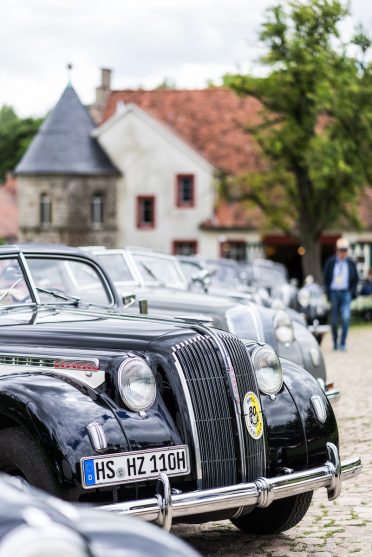
The group travelled 55 kilometers before arriving at Schloss Westerhaus, situated high above Ingelheim, for a lunch break. The maiden name of the host countess Ivonne von Schönburg-Glauchau is von Opel.

Cutting, covering, baking Professionals could hardly manage the tasks any faster.
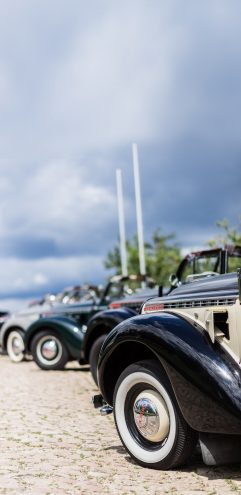
The birthday tour was organized by Alt-Opel IG and Opel Classic.
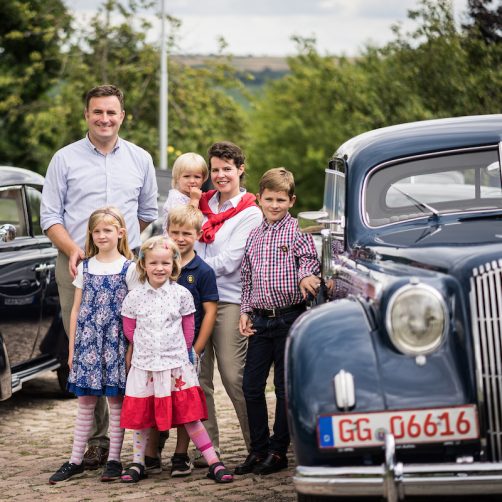
The passion for beautiful cars still runs in the family. Countess Ivonne and her husband Johannes von Schönburg-Glauchau as well as their five children could hardly take their eyes off the classic cars.
Austria’s only Admiral
I hop into the car that belongs to Renate and Dr. Wolfgang Kern for the return journey. They have travelled in from Graz with Austria’s only Admiral. They are also here for the first time, and they are having fun. The sedan runs flawlessly, but soon it becomes clear what makes the elaborate design of the front end necessary. The engine releases a large amount of waste heat into the interior. This is why the Admiral is fitted with beautiful air outlets above the fenders, and why it also has venting flaps in front of the A-pillar. And the four lateral side-hung windows, operated with beautiful, manually operated cranks, are anything but luxurious.
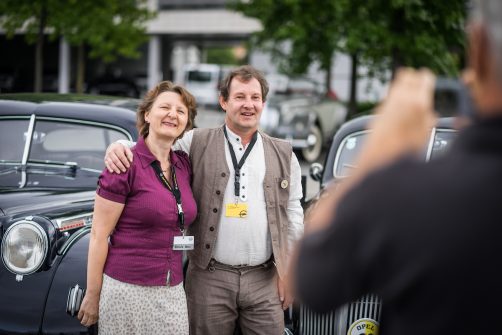
Renate und Wolfgang Kern with Austria’s only Admiral.
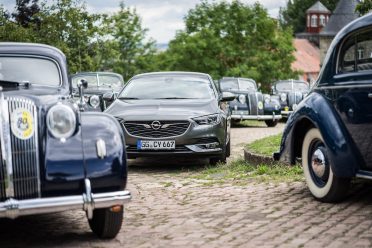
The decisive difference Spare parts and workshops are available for the Insignia.
The new Insignia today is what the Admiral was for Opel 80 years ago. The participants examine it with great interest. It can do much more and requires much less than its elderly predecessor – which can only be the case after eighty years. Moreover, spare parts and specialist workshops are available for the Insignia. And it’s available for leasing.
August 2017